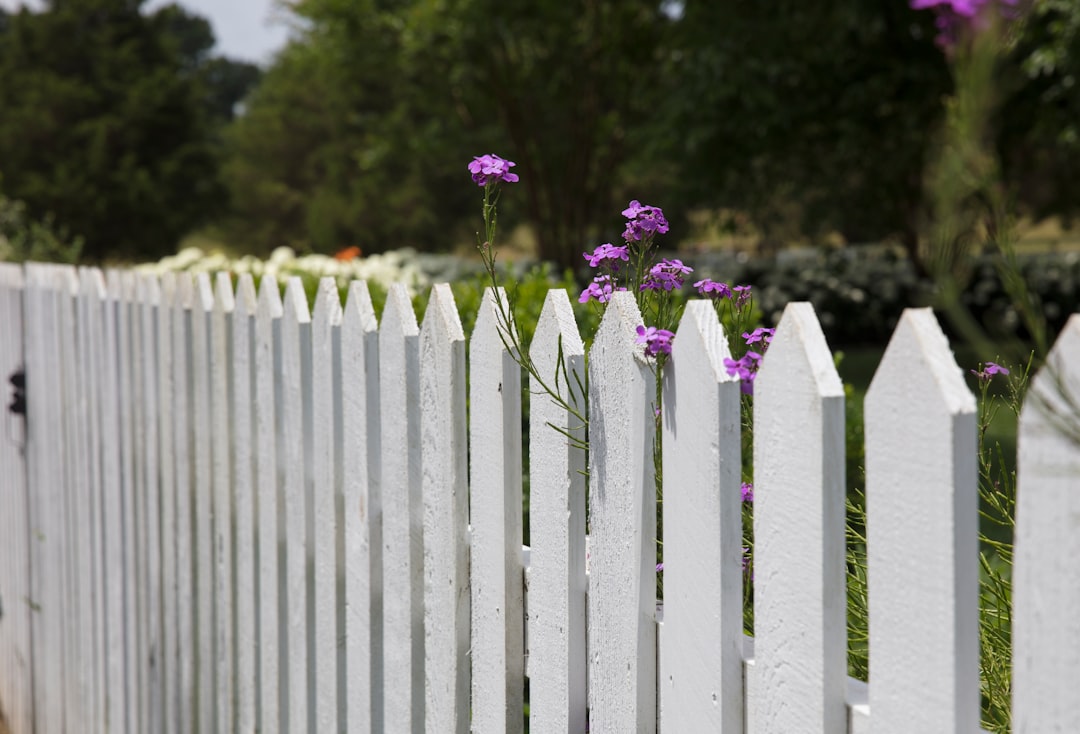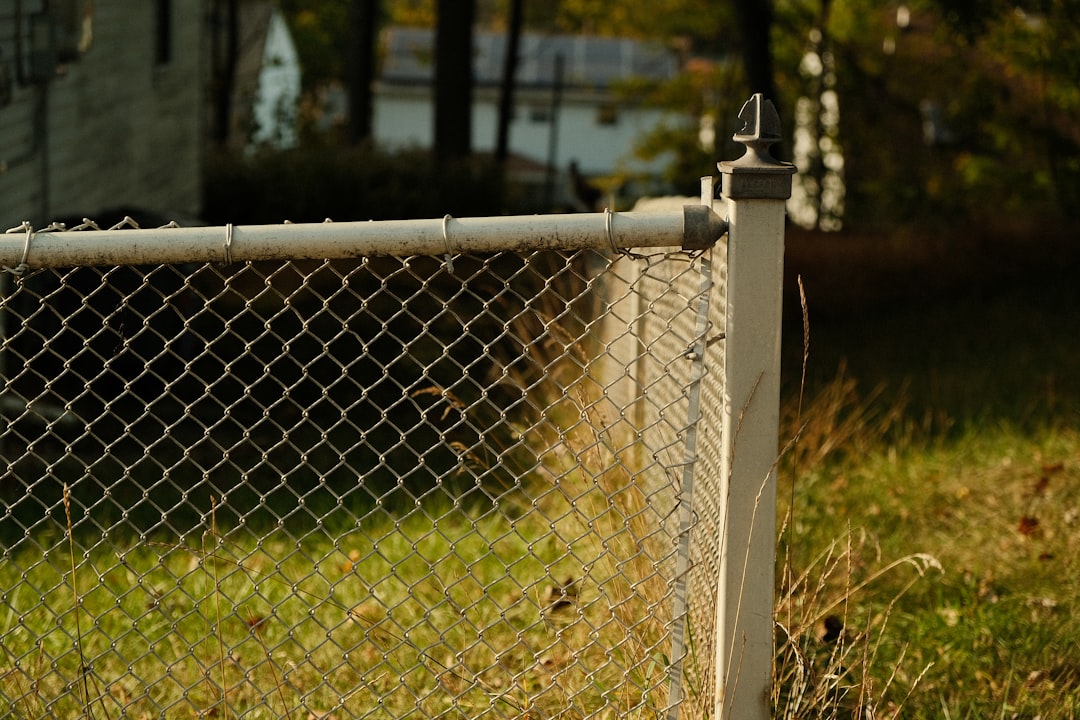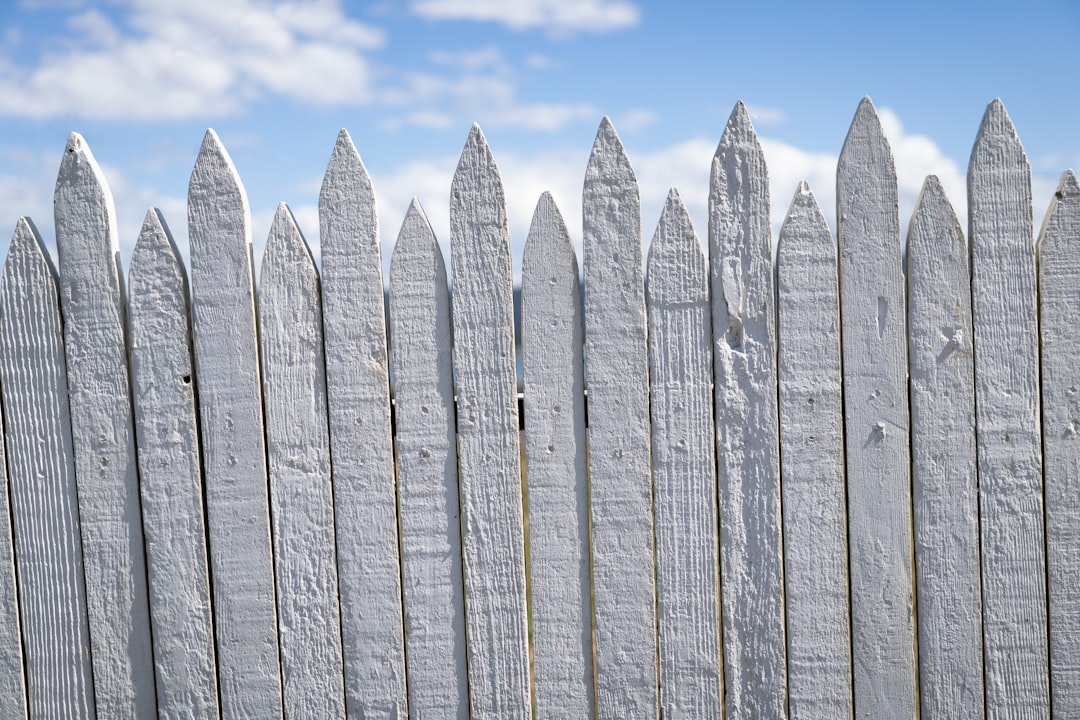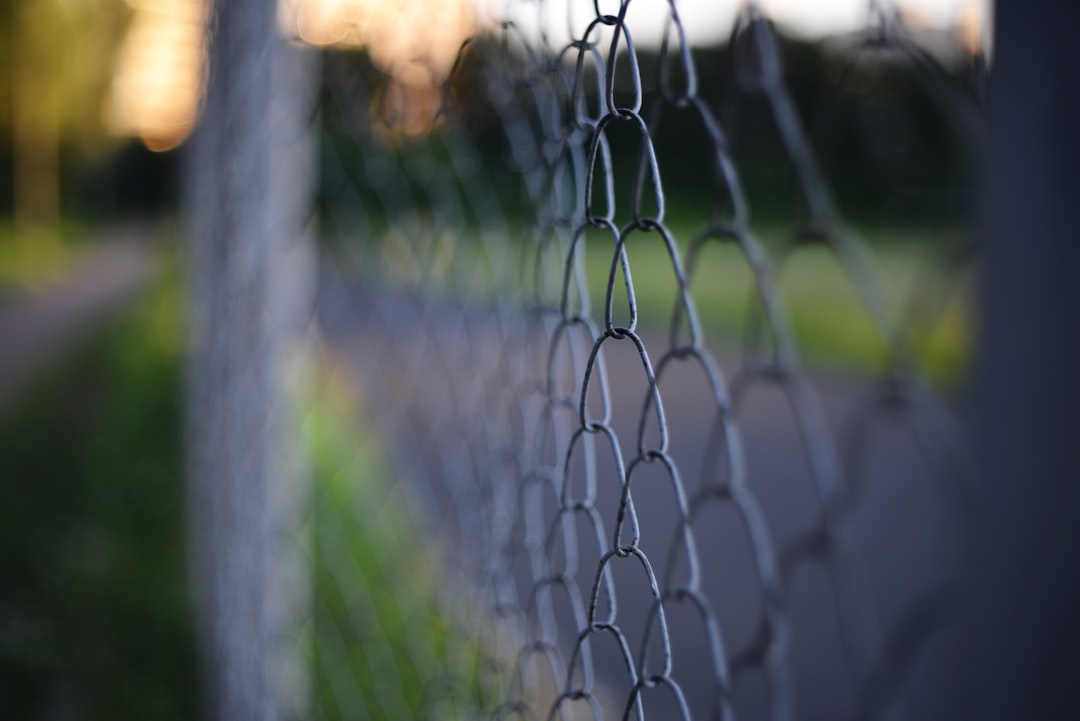

Engage prospects with a scan and streamline customer engagement with FREE QR code marketing tools by Sona – no strings attached!
Create a Free QR CodeFree consultation

No commitment

Engage prospects with a scan and streamline customer engagement with FREE QR code marketing tools by Sona – no strings attached!
Create a Free QR CodeFree consultation

No commitment
The fence repair services industry has long relied on physical interactions such as door hangers, yard signs, printed estimates, and manual intake forms to connect with clients and capture new business. However, many fence providers now recognize the frustration customers face when they cannot get instant access to estimates, schedule services, or find essential warranty and maintenance information. As expectations shift toward digital-first engagement, local fence repair companies must overcome the challenge of missing high-value prospects who never fill out a form or make a call.
QR codes offer a practical bridge, enabling fence repair teams to turn every physical touchpoint into an opportunity for seamless digital connection. This shift removes friction at critical moments, speeds up decision-making, and allows crews to collect accurate information without the back-and-forth that causes delays. It also enables the business to keep messages current without reprinting costly materials.
Leveraging QR codes allows fence repair businesses to simplify outdated analog processes and reduce missed follow-ups and inefficient outreach. Modern QR platforms provide robust scan tracking, route engagement data back to your CRM, and enable audience segmentation for retargeting. When deployed strategically, QR codes transform everyday assets into conversion engines while delivering the attribution insights that owners and marketers have been missing. See Sona QR’s product overview for a feature-by-feature look at how this works.

QR codes bridge the persistent gap between offline engagement and digital outcomes, addressing the challenge where qualified homeowners express interest but never formally register or request service through a form. This can lead to missed high-value leads and untracked job opportunities, especially when the only interaction is a fleeting glance at a flyer or a moment with a field technician. By placing scannable access points directly on the materials people already notice, you invite them to take the next step instantly.
Replace analog bottlenecks like paper sign-up sheets, hard-to-read URLs, and outdated brochures with dynamic QR experiences that respond to real-time needs. For example, a yard sign can route to an appointment calendar, while a magnet on a service vehicle can launch a cost calculator tailored to common repairs. When combined with a platform like Sona QR, every scan becomes measurable, editable, and connected to your CRM, which supports faster follow-up and more relevant messaging.
By leveraging a QR management platform, fence repair companies can automate scan tracking and integrate new engagement data into their CRM, providing a feedback loop for higher-value follow-up. This transition enables repair teams to reach and nurture prospects who might otherwise abandon the process, ensuring no interested party is left behind due to analog limitations. It also supports a consistent brand experience regardless of where a homeowner starts their journey. Start creating QR codes for free.

In fence repair, moving interested prospects from offline awareness to concrete online action is a frequent stumbling block, with many homeowners failing to move past the initial touchpoint. This disconnect not only results in missed opportunities but also wastes valuable marketing spend when engagements go untracked or anonymous visits remain invisible to sales teams. QR codes remove that friction and bring measurement to the moments that have historically been unmeasurable; see Sona’s blog post on offline attribution.
QR codes help fence repair businesses modernize the customer journey without asking someone to download an app or remember a long URL. A single scan can open a guided flow for requesting a quote, exploring materials, or checking warranty coverage. The moment a code is scanned, your business can capture context such as location and time, and if integrated with Sona QR, that engagement can trigger automated follow-up and audience segmentation.
When all channels from direct mail to job site signs infuse QR codes into their workflows, businesses can connect more authentically with customers while closing the loop on previously lost or unmeasured interest. The outcome is a tighter, more responsive funnel that serves both homeowners and internal teams.

Fence repair professionals deal with a recurring problem: scattered or incomplete customer information, particularly when prospects interact with physical collateral or event booths but never submit a form. This often leaves high-quality leads untracked in the CRM, hindering efficient outreach and slowing follow-up. Selecting the right QR code format for each interaction helps fill those gaps and standardize how data flows into your systems.
With dynamic QR codes, companies can maintain current, accurate content destinations, which is vital when schedule changes, material shortages, or permit updates could otherwise lead to confusion. The following formats are most useful for fence repair and can be managed centrally with a platform like Sona QR for editing and analytics.
Choosing dynamic over static is recommended whenever you expect to update destinations, need analytics, or plan to segment audiences. Static codes are best reserved for evergreen resources like a general contact page or a permanent maintenance guide.

Many fence repair services struggle with inconsistent outreach and wasted marketing spend, often deploying print and signage without a reliable way to connect these efforts with new leads or attributable revenue. Disconnected campaigns leave prospects confused or disengaged as they encounter generic messages that do not reflect their stage in the buying journey. QR codes make your physical marketing work harder by linking each touchpoint to a specific next step.
Start by auditing where homeowners already interact with your brand: in neighborhoods you serve, at jobs in progress, inside local hardware stores, and through direct mail. Then assign clear QR destinations that reflect the context of each placement. A yard sign near a storm-damaged fence should lead to emergency scheduling, while a vehicle magnet on a busy weekend route might promote a quick estimate flow.
As you collect scan data by channel and location, shift resources toward high-intent placements and refine messaging based on what resonates. Over time, the insights will inform where to expand service coverage and which neighborhoods respond to specific offers.
A central frustration for fence repair teams is the high volume of potential leads who abandon the process before requesting a quote or registering for post-job follow-up, especially when physical and digital touchpoints are not linked. QR codes convert curiosity into action while allowing your team to learn from every interaction.
Deploy a handful of focused use cases that align with common homeowner needs and the stages of your service journey. The right pairings of placement and destination produce measurable gains in conversion, review volume, and retention.
To strengthen outcomes, connect each code to automation rules. For instance, scanning a quote request code might trigger an SMS confirming receipt and a link to upload photos, while a warranty registration scan can automatically enroll the homeowner in a maintenance reminder series.
Another recurring pain point is the lack of actionable, segmented data from physical campaigns. When every scan is tracked, fence repair providers can finally go beyond guessing which campaigns or locations drew in high-fit prospects. With Sona QR, you can tag scans by placement, message, and neighborhood to identify the strongest pockets of demand.
Organize your QR strategy around funnel stages. Codes placed on awareness assets should attract broad interest, while codes on estimates or invoices should capture purchase-ready signals. Segmenting audiences by context and intent helps you tailor follow-up, improve conversion rates, and reduce wasted spend. For campaign execution ideas, see Sona’s Playbook on intent-driven retargeting.
Sync these segments with your CRM and ad platforms to run precise retargeting. For example, serve financing ads to consideration-stage scanners who viewed pricing pages, or send maintenance reminders to warranty registrants before peak weather shifts. Over time, your audience data becomes a durable advantage that lowers acquisition costs.
The risk of fragmented strategy looms large when offline and digital channels are not integrated, leading to inconsistent messaging and wasted ad spend if prospects see disjointed, irrelevant content. QR codes act as connectors across the mix, ensuring that every print or in-person moment leads to a coherent digital experience.
Map your channels to the buyer journey and assign a clear role for each QR touchpoint. Print materials can drive first contact, outdoor signage can capture neighborhood demand, and post-job paperwork can turn one-time customers into promoters. With Sona QR, you can manage all codes in a single dashboard, measure performance across channels, and push scan data to your CRM for automated workflows.
An integrated approach ensures consistency from the first scan to the follow-up message. It also gives you the analytics to refine creatives, improve calls to action, and decide where to reinvest.
Launching an effective QR program in fence repair services requires clarity on goals, disciplined execution, and a commitment to measurement. The following steps align with real-world workflows to eliminate wasted effort and accelerate results. Use this checklist to move from idea to impact while keeping every stakeholder aligned.
Treat each campaign as an iterative experiment. Start with clear hypotheses based on past pain points, such as missed follow-ups or unmeasured mailers, then use scan and conversion data to refine placements, creative elements, and offers. With a platform like Sona QR, you can run controlled tests and optimize on the fly.
Decide what the campaign must accomplish and how you will measure success. Examples include capturing instant quote requests from yard signs, driving permit information lookups from invoices, or increasing warranty registrations from post-job handouts.
Translate the outcome into specific KPIs such as scan-to-form conversion rate, calendar bookings per 100 scans, or warranty registrations per completed job. Clear targets clarify creative direction and placement decisions.
Match the format to the action you want. Dynamic web link codes are ideal for booking and estimates because they can be edited and tracked. vCards fit field staff introductions to property managers. SMS and email starters are best for emergency repair or after-hours requests.
Default to dynamic QR codes for any destination that may change or requires analytics. Use static codes for evergreen content like a general maintenance guide or long-lived contact page.
Make the code instantly recognizable and scannable. Add a visible frame, brand colors, and a logo if available. Pair it with a concise call to action tailored to the context such as “Scan for 2024 fence maintenance guide,” “Book a same-week repair,” or “Check local permit rules.”
Test scannability from different angles, distances, and lighting conditions. Verify that the landing page loads quickly on mobile and that forms auto-format fields for easy entry.
Prioritize placements known for attention and intent. Start with yard signs at active jobs, vehicle wraps, direct mailers in high-response neighborhoods, and estimate folders that reach decision-makers. Align the destination with the homeowner’s likely need at each touchpoint.
Track unique codes by asset and location to identify top performers. This makes it straightforward to pull back from low-impact placements and double down on winners.
Use an analytics dashboard to monitor scans by time, device, and location. Review conversion flow data to identify where drop-offs occur. Run A/B tests on calls to action, landing pages, and incentives such as “free inspection” or “expedited scheduling.”
Iterate based on evidence. Adjust creative and placements in near real time, especially during seasonal spikes or after storms. Feed results into your planning so each campaign gets sharper.
By operationalizing each step around historical pain points such as missed follow-up or anonymous traffic, fence repair businesses can maximize return from each QR-enabled campaign. Over time, you build a system that continuously improves and reliably turns offline attention into booked work.
With Sona QR and Sona, an AI-powered marketing platform for identity resolution and revenue attribution, fence repair companies can capture real-world engagement and connect it to sales activity. You can see which assets create the most appointments, how scan behavior varies by neighborhood, and which messages lead to faster conversions, including attribution models. Integrations with CRMs make it possible to tag contacts by scan source, score leads, and automate nurture paths.
These insights build confidence across teams. Owners see the impact of spend, marketers optimize creatives and placements, and operations prepares for workload based on real-time demand signals. The result is less guessing and more growth.
Operationalizing QR codes comes with challenges: tracking impact across service areas, ensuring timely follow-up, and maintaining engagement as workforces or customer expectations evolve. A few best practices go a long way toward creating a predictable, scalable system that consistently generates demand and improves customer experience.
Focus on clarity, automation, and measurement. Give every code a purpose, surface a benefit-driven call to action, and connect scans to workflows that move customers forward without extra effort from your team.
Once these habits are embedded, your QR program becomes self-reinforcing. Each campaign informs the next, service teams help drive scans in the field, and customers get immediate answers that build trust.

Companies that thoughtfully implement QR codes alleviate many of the most stubborn pain points associated with fence repair lead generation and customer management. While the exact numbers vary by market, the patterns are consistent: faster intake, higher follow-through, and better attribution.
Consider the following ideas as starting points. Adapt them to your service mix, seasonality, and local permit landscape to produce results that compound over time.
Treat these examples as building blocks. Test different placements, calls to action, and incentives such as limited-time discounts or free inspection offers. Measure everything so you can refine quickly.
Despite the potential, QR code adoption can fall short if not tailored to the real-world needs and habits of fence repair customers. Common pitfalls include generic CTAs, hard-to-scan placements, and destinations that are slow or irrelevant on mobile. Avoid these missteps by planning for context and optimizing for quick, meaningful actions.
Every code should deliver value in under ten seconds. If the landing page takes too long to load, the form requires too many fields, or the content is not aligned to the scan context, engagement will drop. Keep it simple, specific, and localized.
Paying attention to execution details ensures QR campaigns truly solve for missed opportunities, inefficient outreach, and inconsistent customer experiences. When combined with strong analytics and disciplined iteration, QR codes become a reliable engine for growth.
QR codes, when designed with the unique challenges of fence repair services in mind, unlock a strategic advantage that connects every job site, estimate, and physical asset to measurable, tailored digital engagement. By removing the friction of outdated analog workflows and combating the pain points of missed leads or inefficient outreach, QR-enabled journeys empower fence repair businesses to deliver instant value, nurture trust, and make data-driven decisions. Adopting a robust QR and analytics platform like Sona QR ensures that each engagement yields actionable insight, helping teams convert anonymous interest into lasting client relationships and reliable revenue growth.
QR codes have revolutionized the fence repair services industry by transforming traditional access management and customer interactions into seamless, data-driven experiences. From enabling secure, controlled access to job sites to providing instant updates and service verification, QR codes streamline operations while enhancing customer trust and satisfaction. Imagine effortlessly tracking every access point and service event, ensuring timely repairs and transparent communication that set your business apart.
With Sona QR, you gain the power to create dynamic, trackable QR codes that can be updated instantly—no need to reprint or redistribute materials. Every scan becomes a valuable data point, connecting real-time access control to improved operational efficiency and stronger client relationships. Start for free with Sona QR today and unlock the full potential of QR codes to grow your fence repair services business with smarter access and superior service delivery.
Fence repair costs vary and can be estimated instantly using QR code-enabled cost calculators provided by many fence repair services.
Common signs include visible damage, wear, or issues noticed during maintenance which can be assessed through QR code access to repair tips and guides.
You can find reliable services by scanning QR codes on yard signs, vehicle magnets, or direct mailers that link to local service providers and booking portals.
Fence repairs include wood, vinyl, and chain link repairs, each with specific maintenance and repair tips accessible via QR codes.
Maintenance tips are available through QR codes placed on service vans, post caps, or invoices that link to seasonal care guides and tutorials.
QR codes enable instant access to estimates, scheduling, warranty registration, and maintenance information, reducing friction and speeding up customer decisions.
Common QR code formats include web links for bookings, vCards for contact sharing, forms for repair requests or warranty registration, Wi-Fi for crew connectivity, and SMS or email starters for emergency requests.
By using QR code analytics to monitor scans by time, location, and asset, businesses can measure conversion rates, attribute revenue, and optimize campaigns.
Best practices include assigning unique codes to assets and locations, using dynamic codes for flexibility, adding clear calls to action, training crews to promote scanning, and automating follow-up communications.
They segment audiences by funnel stage using scan data from different QR placements, enabling targeted follow-up and precise retargeting based on homeowner intent.
Avoid generic calls to action, poor code placement, slow or irrelevant landing pages, and failing to personalize content, as these reduce scan engagement and conversion.
Use Sona QR's trackable codes to improve customer acquisition and engagement today.
Create Your FREE Trackable QR Code in SecondsJoin results-focused teams combining Sona Platform automation with advanced Google Ads strategies to scale lead generation

Connect your existing CRM

Free Account Enrichment

No setup fees
No commitment required

Free consultation

Get a custom Google Ads roadmap for your business






Launch campaigns that generate qualified leads in 30 days or less.
